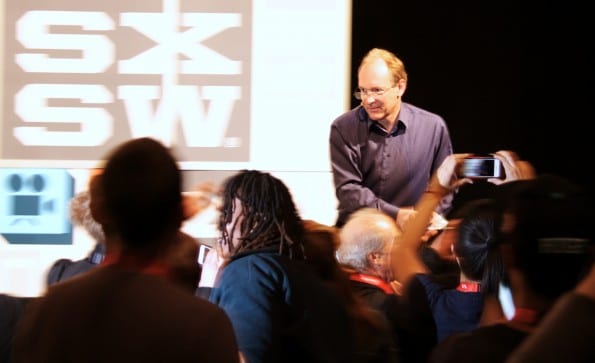

(It later became Netscape.) Mosaic offered a user-friendly way to search the Web: It allowed users to see words and pictures on the same page for the first time and to navigate using scrollbars and clickable links. In 1992, a group of students and researchers at the University of Illinois developed a sophisticated browser that they called Mosaic. Since then, the internet has changed in many ways. Berners-Lee created the Internet that we know today. That year, a computer programmer in Switzerland named Tim Berners-Lee introduced the World Wide Web: an internet that was not simply a way to send files from one place to another but was itself a “web” of information that anyone on the Internet could retrieve. However, in 1991 the internet changed again. Throughout the 1980s, researchers and scientists used it to send files and data from one computer to another.

(Later, he added an additional protocol, known as “Internet Protocol.” The acronym we use to refer to these today is TCP/IP.) One writer describes Cerf’s protocol as “the ‘handshake’ that introduces distant and different computers to each other in a virtual space.” The World Wide WebĬerf’s protocol transformed the internet into a worldwide network. He called his invention “Transmission Control Protocol,” or TCP. As packet-switched computer networks multiplied, however, it became more difficult for them to integrate into a single worldwide “internet.”īy the end of the 1970s, a computer scientist named Vinton Cerf had begun to solve this problem by developing a way for all of the computers on all of the world’s mini-networks to communicate with one another. In 1971, it added the University of Hawaii’s ALOHAnet, and two years later it added networks at London’s University College and the Royal Radar Establishment in Norway. The Network Growsīy the end of 1969, just four computers were connected to the ARPAnet, but the network grew steadily during the 1970s. (The first computer was located in a research lab at UCLA and the second was at Stanford each one was the size of a small house.) The message-“LOGIN”-was short and simple, but it crashed the fledgling ARPA network anyway: The Stanford computer only received the note’s first two letters. On October 29, 1969, ARPAnet delivered its first message: a “node-to-node” communication from one computer to another. Without packet switching, the government’s computer network-now known as the ARPAnet-would have been just as vulnerable to enemy attacks as the phone system. That way, each packet can take its own route from place to place. scientist developed a way of sending information from one computer to another that he called “packet switching.” Packet switching breaks data down into blocks, or packets, before sending it to its destination.

Such a network would enable government leaders to communicate even if the Soviets destroyed the telephone system. Licklider proposed a solution to this problem: a “galactic network” of computers that could talk to one another. Just one missile, they feared, could destroy the whole network of lines and wires that made efficient long-distance communication possible. Scientists and military experts were especially concerned about what might happen in the event of a Soviet attack on the nation’s telephone system. And the federal government itself formed new agencies, such as the National Aeronautics and Space Administration (NASA) and the Department of Defense’s Advanced Research Projects Agency (ARPA), to develop space-age technologies such as rockets, weapons and computers. Corporations took government grants and invested them in scientific research and development. Schools added courses on subjects like chemistry, physics and calculus. Still, to many Americans, the beach-ball-sized Sputnik was proof of something alarming: While the brightest scientists and engineers in the United States had been designing bigger cars and better television sets, it seemed, the Soviets had been focusing on less frivolous things-and they were going to win the Cold War because of it.ĭid you know? Today, almost one-third of the world’s 6.8 billion people use the internet regularly.Īfter Sputnik’s launch, many Americans began to think more seriously about science and technology. The satellite, known as Sputnik, did not do much: It relayed blips and bleeps from its radio transmitters as it circled the Earth. On October 4, 1957, the Soviet Union launched the world’s first manmade satellite into orbit.


 0 kommentar(er)
0 kommentar(er)
